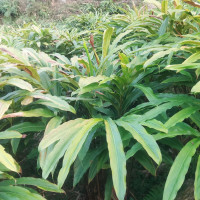- Monday, 29 December 2025
Endangered Wild Water Buffalo
Wild Water Buffalo (Bubalus arnee), known as Arna in Nepali, is found in lowland within the protected area of Koshi Tappu Wildlife Reserve (KTWR) in Nepal. The reserve area is spread over 175 square kilometers. In 1969, about 12 square kilometres were constructed to protect the habitat of wild water buffalo. Then, in 1976, the area was increased to about 65 square kilometres, and in 1980, the area was expanded to 175 square kilometres.
Known as the only habitat of wild water buffalo in Nepal, KTWR has also been listed in the first Ramsar list of Nepal. An intermediate zone was also declared, including the region. The main reason for seeing wild water buffalo in this area is the wetlands formed by the Saptakoshi River, Triyuga River, Moriadhar Lake, Bhas swamp, Kamalpur dam, Bhagalpur dam, Kushaha wetland, ditch, canal, grassland, and reservoir areas. There are currently 498 wild water buffalos in the reserve. With the global population of wild water buffalo estimated at less than 3400, it is listed as endangered on the IUCN Global and National Red List. Also, this species is placed in CITES Schedule 3.
The Indian subcontinent and the central region of Southeast Asia are home to the wild water buffalo. Besides Nepal, it is found in Bhutan, India, Cambodia, and Thailand. It is estimated that the creature is extinct in Bangladesh, Laos, Sri Lanka, and Vietnam.
Chitwan National Park (CNP) used to be the habitat of the wild water buffalo. However, in the 1960s, it disappeared from CNP due to disease. Wild water buffalo make up 91 per cent (mostly in Assam) of the world's population in India. Experts believe that wild water buffaloes were the ancestors of domestic buffaloes in India and China, some 6,000 to 7,000 years ago.
Features
The wild water buffalo boasts impressive body features. From snout to rump, it stretches 240-300 cm, with an additional 60-100 cm tail. Standing tall, its shoulder height ranges from 150-190 cm. Perhaps most striking are its horns, which can span up to 2 metres wide. This animal's hooves are expansive and splayed. Outweighing its domesticated kin, it tips the scales between 600-1200 kg. Its hide ranges from slate to ebony hues. A sleek mane flows from crown to withers, curling forward. Small ears and tufts beautify its brow. The tail ends in a dense, waxy tip. Its horns curve, honed to sharp points. These animals have a life span of 25 years.

Habitat
Wild water buffalos are found in lush grasslands and riverbanks teeming with vegetation. They also inhabit warm, dry mixed-deciduous forests. The annual flooding of the Saptakoshi River creates ideal grassland and forest habitats in KTWR. During hot seasons, these animals seek relief in river banks, ponds, and muddy areas. While in winter they congregated in large herds. In the summer months, they prefer to stay scattered in small groups.
Wild water buffaloes walk in the dense forest to graze on selective grass, and at night, they stay in the grassy fields scattered with dry patches. They also graze with domesticated cows, buffaloes, and oxen. If they are threatened, they use their sharp horns for defense. Occasionally, they enter the human settlements and attack people. In Koshi Tappu, local residents were injured, and some died due to the attack of wild water buffalo. In KTWR, the wild water buffaloes attack locals, which has led to injuries and sometimes fatalities. During a recent photography expedition near the buffer zone, wild buffalo entered a settlement. Recently, a young girl lost her life due to an attack by the wild buffalo.
A male wild water buffalo becomes sexually active at 18 months and females in 3 years. Males mate with multiple females. The gestation period lasts from 10 to 11 months, typically resulting in a single calf. However, twins occur occasionally. Usually, the female gives birth in the months of October and November. But some of these animals breed year-round.
Threats
According to Ankit Paudel, Conservation Officer of KTWR, these animals are given the highest level of protection in Nepal under the National Parks and Wildlife Protection Act, 1973. Besides in Nepal, wild buffalo are legally protected in Bhutan, India, and Thailand.
These creatures occasionally migrate to the intermediate areas of Saptari, Sunsari, and Udayapur districts on both sides of the Koshi River in the reserve.

The main challenge in protected areas for these animals is the loss of genetic potential due to the crossbreeding between domesticated and wild buffaloes. Also, the species faces declining numbers as floodplain habitats are transformed for agricultural use and hydropower projects.
Section 29 of the National Parks and Wildlife Protection Act of Nepal 2029 BS outlines strict penalties for those who harm or kill protected wild water buffalos. Offenders may face fines ranging from Rs. 100,000 to Rs. 500,000, imprisonment from one to ten years, or a combination of both.
(The author is a wildlife photographer. Photos used in this article are by the author himself.)















-original-thumb.jpg)

